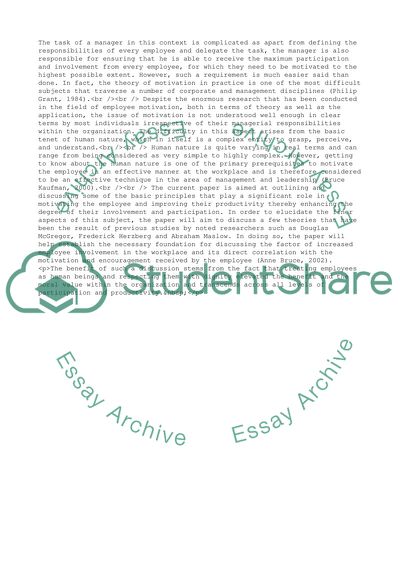Cite this document
(Employee Motivation and Productivity Essay Example | Topics and Well Written Essays - 2000 words - 2, n.d.)
Employee Motivation and Productivity Essay Example | Topics and Well Written Essays - 2000 words - 2. Retrieved from https://studentshare.org/management/1726084-critically-evaluate-the-claim-that-employee-involvement-and-participation-initiatives-contribute-to-increased-employee-motivation-and-productivity
Employee Motivation and Productivity Essay Example | Topics and Well Written Essays - 2000 words - 2. Retrieved from https://studentshare.org/management/1726084-critically-evaluate-the-claim-that-employee-involvement-and-participation-initiatives-contribute-to-increased-employee-motivation-and-productivity
(Employee Motivation and Productivity Essay Example | Topics and Well Written Essays - 2000 Words - 2)
Employee Motivation and Productivity Essay Example | Topics and Well Written Essays - 2000 Words - 2. https://studentshare.org/management/1726084-critically-evaluate-the-claim-that-employee-involvement-and-participation-initiatives-contribute-to-increased-employee-motivation-and-productivity.
Employee Motivation and Productivity Essay Example | Topics and Well Written Essays - 2000 Words - 2. https://studentshare.org/management/1726084-critically-evaluate-the-claim-that-employee-involvement-and-participation-initiatives-contribute-to-increased-employee-motivation-and-productivity.
“Employee Motivation and Productivity Essay Example | Topics and Well Written Essays - 2000 Words - 2”. https://studentshare.org/management/1726084-critically-evaluate-the-claim-that-employee-involvement-and-participation-initiatives-contribute-to-increased-employee-motivation-and-productivity.


